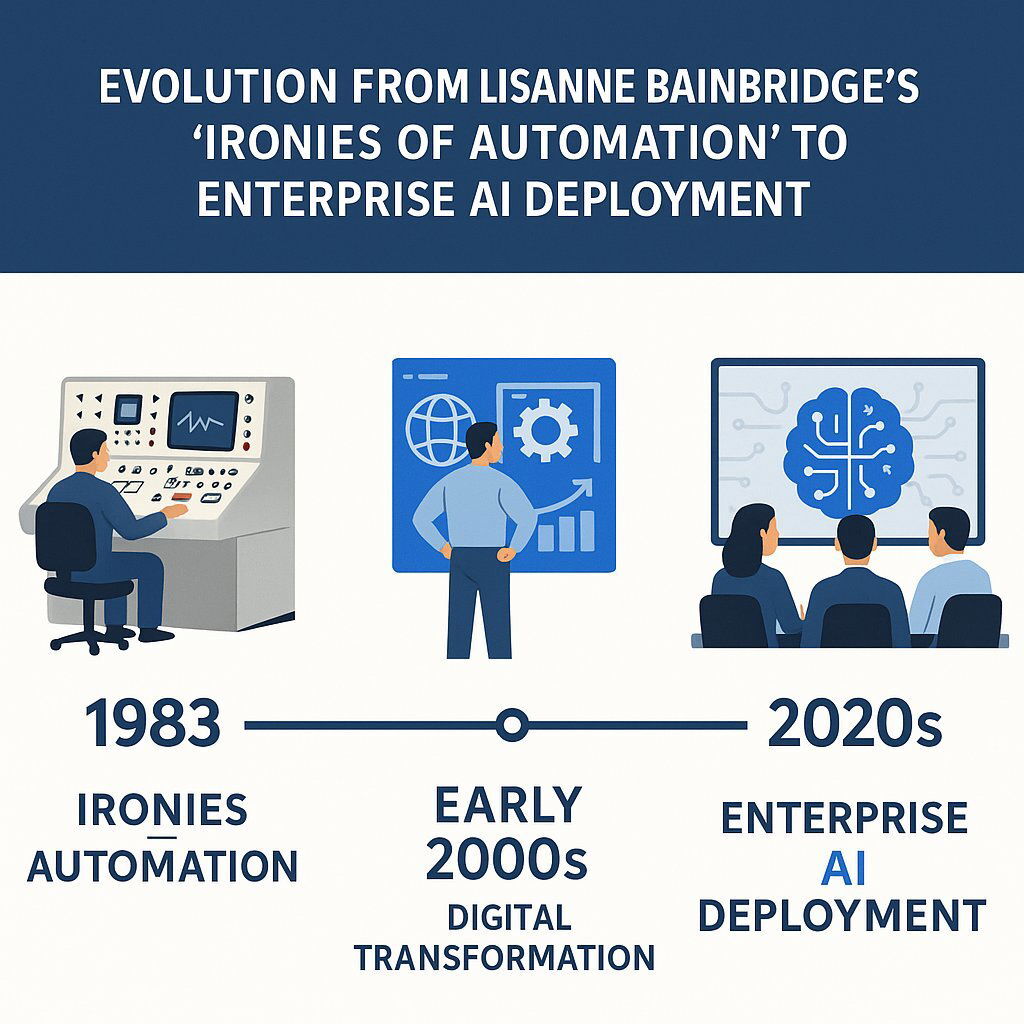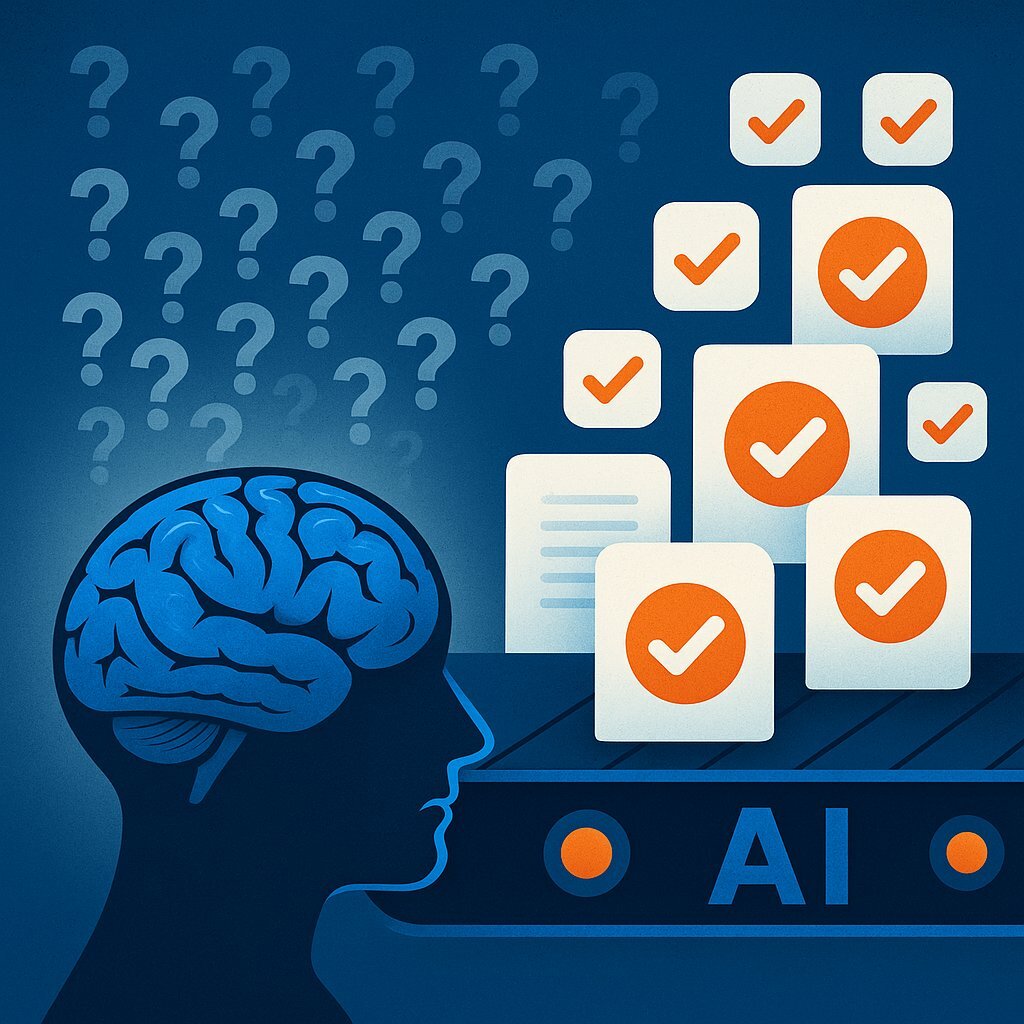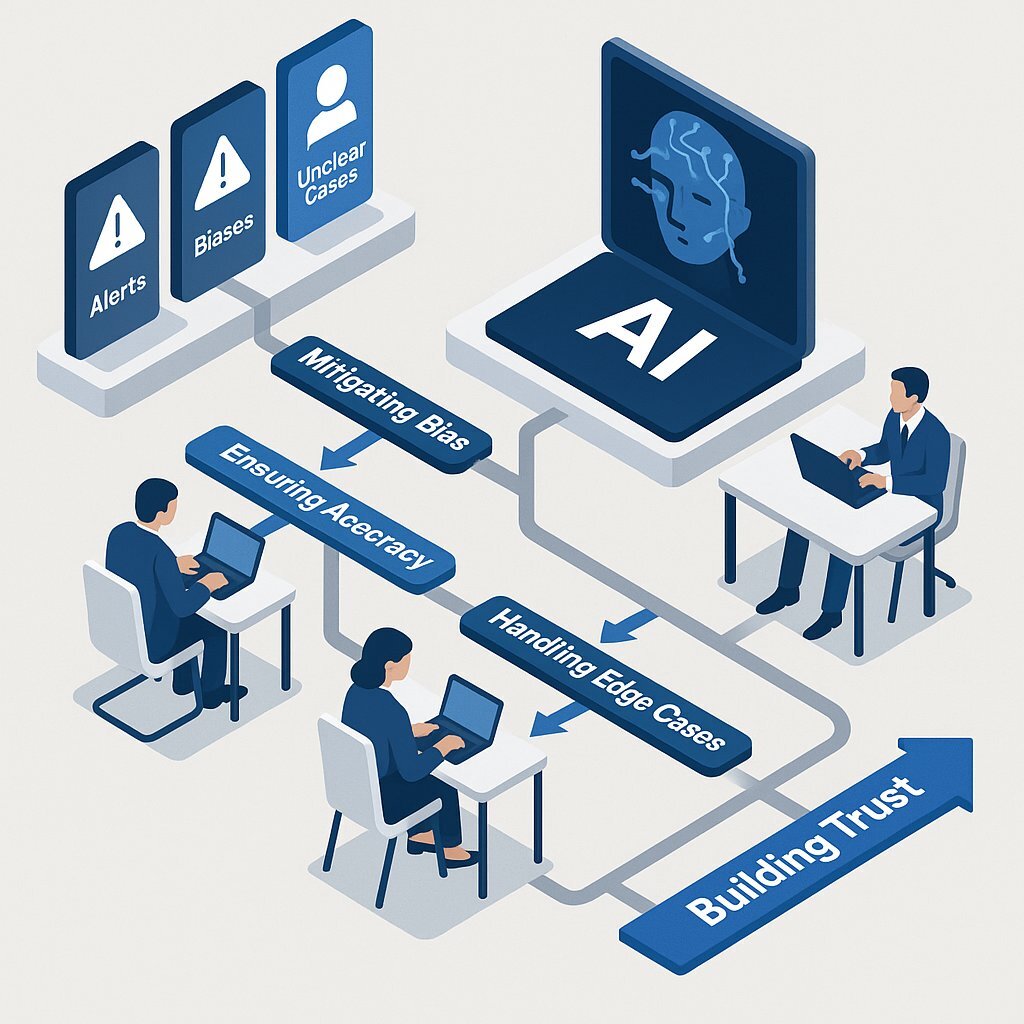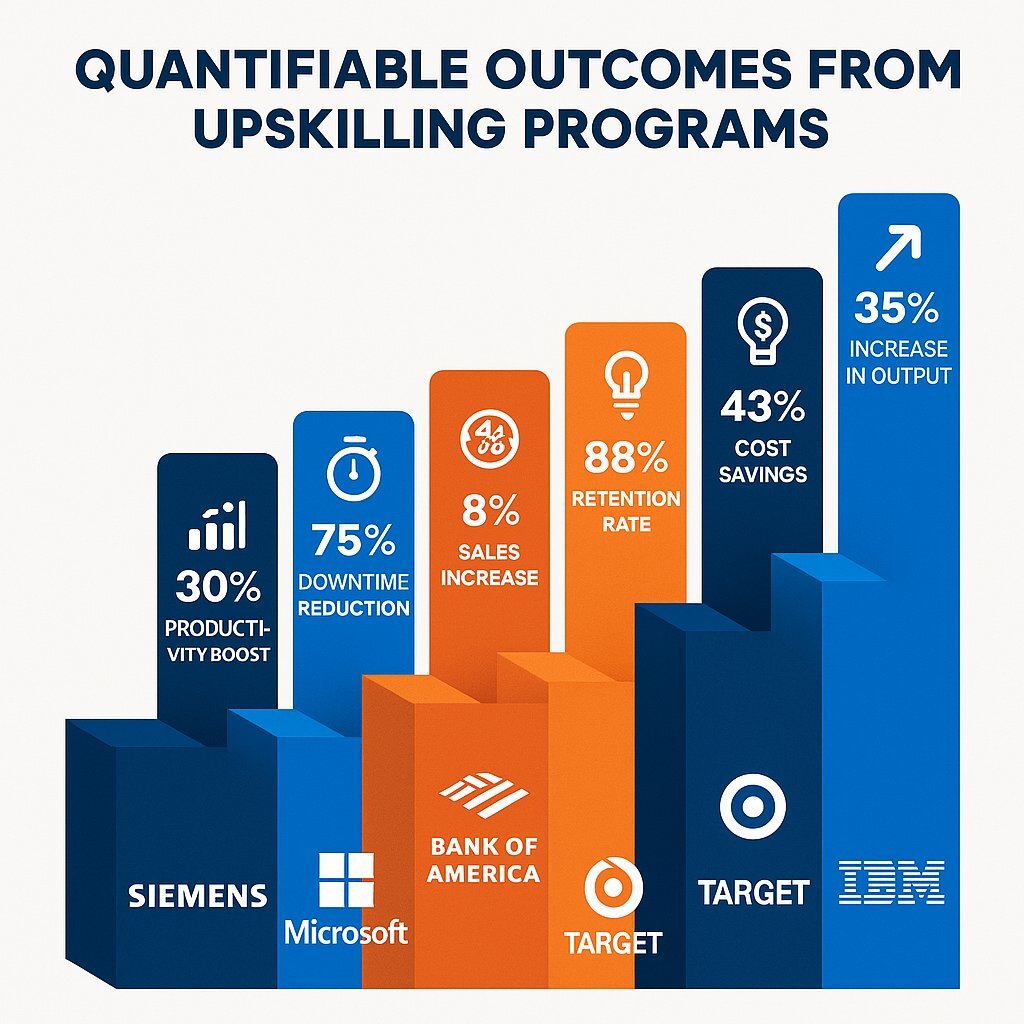
The Automation Paradox: Why AI Needs More Human Expertise, Not Less
November 17, 2025 / Bryan ReynoldsThe Automation Paradox: Why Your AI Strategy Demands Smarter Humans, Not Fewer

You've seen the demos and read the reports. The promise of artificial intelligence is one of hyper-efficiency, radical cost reduction, and streamlined operations. For many leaders, the unspoken assumption is that this path inevitably leads to a smaller, leaner workforce. But what if the opposite were true? What if the very systems designed to reduce human input actually create a new, more urgent dependency on elite human talent?
Welcome to the Automation Paradox.
The more complex, autonomous, and integrated your AI systems become, the more your organization's success, resilience, and competitive advantage will hinge on the sophisticated judgment, critical thinking, and problem-solving skills of your human experts. This isn't a bug in the system; it's a fundamental feature of advanced automation that has been understood for decades but is only now hitting the enterprise with full force. Ignoring this paradox is the single biggest strategic risk in the age of AI.
This is the critical conversation every CIO, CTO, and Head of Operations needs to be having right now. It’s a shift from viewing AI as a tool for human replacement to understanding it as a catalyst for human elevation . This article will deconstruct the paradox, map the resulting shift in skill requirements, underscore the non-negotiable need for human governance, and provide a data-backed case for why your most crucial AI investment isn't in the technology itself, but in the people who will command it.
Deconstructing the Automation Paradox: From a 1980s Theory to a 2025 Business Reality
The core idea isn't new. In 1983, long before the advent of large language models, cognitive psychologist Lisanne Bainbridge published a seminal paper titled "Ironies of Automation." Her argument was as prescient as it was counter-intuitive: automating
most, but not all, of a system's operations doesn't eliminate human challenges. Instead, it creates new and more severe ones. The human operator, freed from routine tasks, is left with the exhausting job of monitoring a system that rarely fails. But when it does, that same operator must instantly transform from a passive observer into a sharp, skilled expert, ready to handle a critical intervention for which their skills may have degraded from sheer lack of use.
The Cautionary Tale: Air France 447
To understand the stakes, consider one of the most tragic real-world examples of this paradox: the crash of Air France Flight 447 on June 1, 2009. The Airbus A330 was a marvel of modern automation. On its flight from Rio de Janeiro to Paris, a minor and temporary blockage of the aircraft's pitot tubes (speed sensors) by ice crystals caused the autopilot to disengage, handing control back to the pilots.
What followed was a catastrophic failure of the human-machine system. The flight crew, accustomed to hundreds of hours of the autopilot managing the flight flawlessly, found themselves disoriented. Their manual flying skills, while certified, were "rusty" from disuse. Conflicting data and a lack of recent practice in manually handling an aerodynamic stall at high altitude led them to make a series of fatal errors, ultimately causing a perfectly airworthy plane to plunge into the Atlantic, costing 228 lives.
This wasn't a failure of the pilots' intelligence, but a systemic failure born from the paradox. The very reliability of the automation had eroded the situational awareness and hands-on skills necessary for a crisis. The system had conditioned its human operators for passivity, leaving them unprepared for the rare moment when their active expertise was the only thing that mattered.
The Modern Cockpit: Your Enterprise and the "Autopilot of Knowledge"
Today, a similar dynamic is playing out not in the cockpit, but across your enterprise. Large Language Models (LLMs) and agentic AI are becoming the "autopilot of knowledge." Tools like GitHub Copilot can write entire functions, and generative platforms can produce marketing copy, financial summaries, and legal drafts in seconds. They are automating routine cognitive work at an unprecedented scale.
Yet, this convenience brings the same risk of cognitive atrophy. A 2025 study by researchers at Microsoft and Carnegie Mellon University found that knowledge workers who relied most heavily on AI assistants thought less critically about the tools' conclusions. The more we trust the AI to be accurate, the less we engage our own analytical faculties. The human role shifts from

problem-solving to answer-verifying —a subtle but profound change. This creates a "cognitive complacency trap." The danger isn't merely the loss of a specific skill, like writing a boilerplate email, but the erosion of the underlying mental muscles of critical thinking and situational awareness. Automation conditions the human brain to be a passive monitor, trusting the output it receives. This state is the polar opposite of the hyper-vigilant, skeptical mindset required to spot a subtle flaw in an AI's logic or take decisive action when a system produces a dangerously incorrect result.
This phenomenon also reverses the traditional learning curve. In most roles, expertise is built through frequent, hands-on practice. Under high automation, however, the most critical skills are needed precisely when they are practiced the least. This creates an inverse relationship between system reliability and human readiness. As a result, organizations can no longer depend on daily work to keep essential skills sharp. This demands a fundamental shift in corporate training, moving from experience-based learning to continuous, simulation-based education designed to prepare teams for high-stakes events that may almost never happen, but could be catastrophic if they do.
The Great Skill Shift: How AI is Augmenting, Not Automating, Your Best People
The most strategic way to view AI is not through the binary lens of job replacement, but through the more nuanced framework of task transformation. The conversation must shift from automation to augmentation. Automation handles predictable, rule-based, and repetitive tasks. Augmentation, in contrast, is a collaborative partnership where AI enhances human judgment, creativity, and expertise, freeing professionals to focus on higher-value strategic work. The objective is not a "lights-out" operation, but a "human-plus" enterprise where AI serves as a powerful force multiplier for your most talented people.
This shift is creating a new hierarchy of skills. Research by the McKinsey Global Institute has consistently shown that while the need for manual and basic cognitive skills is declining, the demand for higher-order skills is growing rapidly. By 2030, the demand for social and emotional skills—such as communication, empathy, and leadership—is projected to rise by 24%. Similarly, the World Economic Forum's
Future of Jobs Report highlights that skill gaps, particularly in areas like AI and data analysis, are now the single biggest barrier to business transformation for 63% of employers.
The skills that are becoming most valuable are precisely those that AI cannot replicate: creativity in the face of novel problems, complex decision-making under ambiguity, ethical judgment, and true systems thinking. The table below illustrates how tasks within core business functions are evolving, providing a framework for leaders to redesign roles and rethink talent development.
Table 1: The Evolving Value of Skills in an AI-Powered Enterprise
| Skill Category | Tasks Being Automated (AI Performs) | Tasks Being Augmented (Human + AI Collaboration) | Uniquely Human-Centric Skills (Human Leads) |
|---|---|---|---|
| Data & Analytics | Data collection, cleaning, and basic report generation. | Trend identification, predictive modeling, anomaly detection. | Strategic interpretation of insights, asking novel questions, data storytelling. |
| Content & Comm. | First drafts of emails, reports, and marketing copy. | Code generation/completion, text editing, SEO optimization. | Crafting an inspiring vision, building trust, empathetic client communication, negotiation. |
| Operations & Process | Routine ticket classification, appointment scheduling, invoice processing. | Threat detection, supply chain optimization, lead scoring. | Complex problem-solving for novel issues, ethical decision-making, managing stakeholder relationships. |
| Strategy & Mgmt. | Compiling competitor data, summarizing meeting notes. | Scenario planning, market analysis, resource allocation modeling. | Setting strategic direction, fostering an innovative culture, mentoring talent, navigating ambiguity. |
This framework provides a practical tool for role redesign. It helps leaders answer the critical questions: "What routine tasks should my team stop doing? What complex work should they be doing in partnership with AI agents? And where must we double down on uniquely human talents?"
The High Cost of Unsupervised Systems: Why Human Governance is Non-Negotiable
The efficiency of automation is a powerful but double-edged sword. When a system is working correctly, it creates value at an incredible speed. But when an error occurs, that same system becomes a massive error amplifier, multiplying the mistake at scale until a skilled human operator intervenes.
Consider the 2009 Toyota recall. A single, systematic flaw in the design of an accelerator pedal was replicated across millions of top-selling vehicles. The result was a recall that cost the company over $5 billion and inflicted immense, lasting damage on a reputation built over decades. This is the physical-world equivalent of what can happen in your digital infrastructure. A flawed algorithm in a high-frequency trading model, a single incorrect data point that poisons a supply chain forecast, or a biased AI model used in hiring can propagate damage at a speed and scale that is difficult to comprehend. This is why the custom software solutions developed by firms like Baytech Consulting prioritize enterprise-grade quality, with robust validation and exception-handling built in—because in a scaled system, there is no such thing as a "small" error.
As organizations move beyond reactive generative AI to proactive, autonomous agentic AI, the need for a formal governance structure becomes paramount. AI governance is no longer just an IT issue; it is a board-level concern that must be integrated into the organization's core enterprise risk management (ERM) framework. The potential for a poorly governed AI to cause systemic financial, legal, and reputational damage elevates it to the same level of concern as cybersecurity and financial compliance.
A best-practice approach is to implement a dedicated AI Risk Management Framework, such as the one developed by the U.S. National Institute of Standards and Technology (NIST). This framework provides a structured methodology based on four core functions: Govern, Map, Measure, and Manage. Effective governance requires establishing a cross-functional oversight group—including representatives from legal, IT, security, and key business units—to set clear and enforceable policies on AI use, data privacy, model validation, and deployment workflows.
Human-in-the-Loop (HITL): Your Strategic Control System
At the heart of any robust AI governance program is the principle of Human-in-the-Loop (HITL). HITL is a system designed to strategically combine the processing power of machines with the contextual understanding and nuanced judgment of human experts. This is not simply about adding an approval step at the end of a process. It's about fundamentally re-architecting workflows to ensure human oversight is applied where it matters most.

Effective HITL systems play several critical roles:
- Mitigating Bias: AI models trained on historical data can inadvertently perpetuate and even amplify existing societal biases, creating significant legal and ethical risks, particularly in areas like hiring and lending. Human oversight is essential to detect and correct for these biases.
- Ensuring Accuracy: In high-stakes domains like medical diagnostics, financial analysis, or engineering, a human expert's validation is non-negotiable. AI can flag anomalies in a medical scan or financial report, but the final diagnosis or decision rests with a trained professional who can apply contextual knowledge the machine lacks.
- Handling Ambiguity and Edge Cases: AI excels at pattern recognition within its training data but struggles with novel or ambiguous situations. HITL workflows are designed to escalate these "edge cases" to humans who can apply common-sense reasoning and creative problem-solving.
- Building Trust: For both internal users and external customers, knowing that a human expert is overseeing critical AI-driven decisions is crucial for building trust and driving adoption of the technology.
Successful HITL implementation is a sophisticated design challenge. Simply asking a human to review thousands of machine-generated outputs will induce the very cognitive complacency the system is meant to prevent. A well-designed system, like those used by the customer support platform Gusto or integrated into coding assistants, presents information in a way that facilitates critical thinking, highlights uncertainty, and keeps the human expert actively engaged and effective.
The ROI of Intelligence: Building Your Business Case for Continuous Upskilling
Here is the most dangerous disconnect in corporate AI strategy today: leaders will sign off on multimillion-dollar technology investments but balk at the corresponding investment in human capital. Recent PwC survey data reveals a startling gap: while 47% of companies expect to integrate AI into their technology platforms, only 31% plan to integrate it into their workforce and skills development strategies over the same period. An AI budget without a significant, parallel learning and development (L&D) budget is a plan for failure.
To secure that investment, leaders must build a data-driven business case that frames upskilling not as a cost center, but as a high-return investment in the organization's future viability. The numbers are compelling:
- Savings vs. Hiring: It is vastly more expensive to recruit, hire, and onboard a new employee than it is to upskill or reskill a current one. Studies consistently show the replacement cost of a salaried employee ranges from 50% to as high as 200% of their annual salary, factoring in recruitment fees, training time, and lost productivity.
- Retention and Engagement: According to the Work Institute's 2025 Retention Report, the single top preventable reason employees leave their jobs is a lack of career development and growth opportunities. Investing in your people's skills is one of the most effective retention strategies available, fostering loyalty and demonstrating a mutual commitment to success.
- Productivity and Agility: A highly skilled workforce is a more productive and adaptable one. With 87% of companies already facing or anticipating a skills shortage, the ability to build talent internally is a massive competitive advantage, enabling the organization to pivot faster in response to market shifts. The ROI formula is straightforward: ROI = ((Gain from Investment − Cost of Investment) / Cost of Investment).
The evidence from companies that have committed to large-scale upskilling initiatives is undeniable. The following table showcases concrete, quantifiable business outcomes from organizations that recognized the need to invest in their people alongside their technology.
Table 2: Quantifiable Wins From Corporate Upskilling Programs

| Company | Upskilling Initiative | Quantifiable Business Outcome(s) |
|---|---|---|
| Siemens | Digital skills training for factory workers (automation, troubleshooting). | 20% increase in operational efficiency; significant drop in machine downtime. |
| Microsoft | Global digital skills program (new coding languages, cloud, AI frameworks). | 35% boost in productivity; 22% improvement in employee engagement. |
| GE | Retooling workforce for predictive maintenance using IoT devices. | 25% reduction in unscheduled downtime, saving millions. |
| Bank of America | Training 100,000 employees in cybersecurity and digital banking tools. | 40% reduction in cybersecurity incidents; faster customer onboarding. |
| Target | Training in digital technologies and customer analytics. | 12% increase in sales achieved by trained employees. |
| IBM | Extensive retraining initiatives focused on agile, modern workflows. | 30% faster project turnaround time. |
These results demonstrate that a strategic investment in human capabilities delivers measurable returns in efficiency, productivity, risk reduction, and revenue growth.
Your Strategic Roadmap: Leading Through the Automation Paradox
Navigating the automation paradox requires decisive leadership and a clear plan of action. For CIOs, CTOs, and Operations leaders, the path forward involves four key strategic imperatives:
Step 1: Audit Your AI Roadmap for Critical Human Intervention Points
Before deploying any new AI system, go beyond planning for its success and rigorously plan for its failure. For every automated process, map the "what if" scenarios. Identify the precise moments and decision points where human judgment, ethical oversight, creativity, or complex problem-solving are irreplaceable. This analysis forms the bedrock of your HITL strategy and ensures that you are designing systems for resilience, not just efficiency.
Step 2: Partner with HR to Redesign Roles and Reskill Talent
The introduction of AI is not just a technological change; it's a fundamental shift in how work gets done. Move beyond tweaking job descriptions and begin a comprehensive redesign of work processes and career paths to support a human-machine teaming reality. Deloitte's research indicates that 75% of organizations expect to alter their talent strategies in response to GenAI. Use the "Automated vs. Augmented vs. Human-Centric" framework to conduct a forward-looking skills gap analysis and build targeted reskilling programs to prepare your workforce for the future. For organizations that have launched software projects with clear role boundaries and scope, building an AI-ready workforce is a smart next step.
Step 3: Champion a Culture of Continuous Learning and Adaptability
Upskilling cannot be treated as a one-time training event. It must be woven into the fabric of your corporate culture as an ongoing operational imperative. Fifty years ago, computer competency was a specialized skill; today, it is a baseline expectation. Basic AI literacy will follow the same path. Leaders must model this commitment to lifelong learning and create an environment that encourages experimentation and adaptability. Empower teams to build their own small-scale "agentic" solutions on approved platforms, giving them ownership over improving their own workflows and fostering a bottom-up culture of innovation. Companies that invest in custom software for a competitive advantage often see the benefits of continuous upskilling most acutely.
Step 4: Implement a Robust AI Governance Framework from Day One
Do not wait for a crisis to impose governance. Be proactive. Establish your cross-functional AI governance committee now, before high-stakes systems are deployed at scale. Work with them to define clear policies, create a central model registry to track all AI systems, and build risk-based approval workflows. When engaging with technology partners, ensure their solutions are built to support your governance framework with essential features like comprehensive audit trails, strict version control, and transparency into model behavior. For more on building truly scalable technology, see our executive guide on scaling SaaS to one million users and beyond.
Conclusion: The Human Advantage in an Automated World
The pursuit of a fully automated, "lights-out" enterprise is a seductive but ultimately flawed vision. The automation paradox teaches us that the more powerful our tools become, the more we need skilled artisans to wield them. The ultimate competitive advantage in the age of AI will not come from having the most sophisticated algorithms, but from cultivating the most skilled, adaptable, and critically-minded human workforce to direct, govern, and innovate with those algorithms.
Embracing the paradox is not a defensive measure against technological disruption; it is an offensive strategy to unlock its full potential. The goal is not to build AI that perfectly mimics human thought, but to build human-machine systems that empower your people to think, create, and solve problems in ways they never could before. This fusion of machine scale and human wisdom is the true, sustainable future of work.
How is your organization balancing its investment in AI technology with its investment in human talent? Share your thoughts in the comments below.
Supporting Resources & Further Reading
- https://sloanreview.mit.edu/series/the-future-of-workplace-learning/: An MIT Sloan Management Review Executive Guide on how organizations can make transformational learning a reality in a skill-centered economy.
- https://getcoai.com/news/harvard-business-review-dishes-on-how-ai-expertise-is-reshaping-business-strategy-in-2025/: A Harvard Business Review analysis on how AI is reshaping business strategy and forcing companies to rethink their competitive advantages.
- https://www.mckinsey.com/~/media/mckinsey/industries/public%20and%20social%20sector/our%20insights/defining%20the%20skills%20citizens%20will%20need%20in%20the%20future%20world%20of%20work/defining-the-skills-citizens-will-need-in-the-future-of-work-final.pdf: A foundational report from McKinsey detailing the 56 skills that will become critical as automation and AI reshape the labor market.
About Baytech
At Baytech Consulting, we specialize in guiding businesses through this process, helping you build scalable, efficient, and high-performing software that evolves with your needs. Our MVP first approach helps our clients minimize upfront costs and maximize ROI. Ready to take the next step in your software development journey? Contact us today to learn how we can help you achieve your goals with a phased development approach.
About the Author

Bryan Reynolds is an accomplished technology executive with more than 25 years of experience leading innovation in the software industry. As the CEO and founder of Baytech Consulting, he has built a reputation for delivering custom software solutions that help businesses streamline operations, enhance customer experiences, and drive growth.
Bryan’s expertise spans custom software development, cloud infrastructure, artificial intelligence, and strategic business consulting, making him a trusted advisor and thought leader across a wide range of industries.


